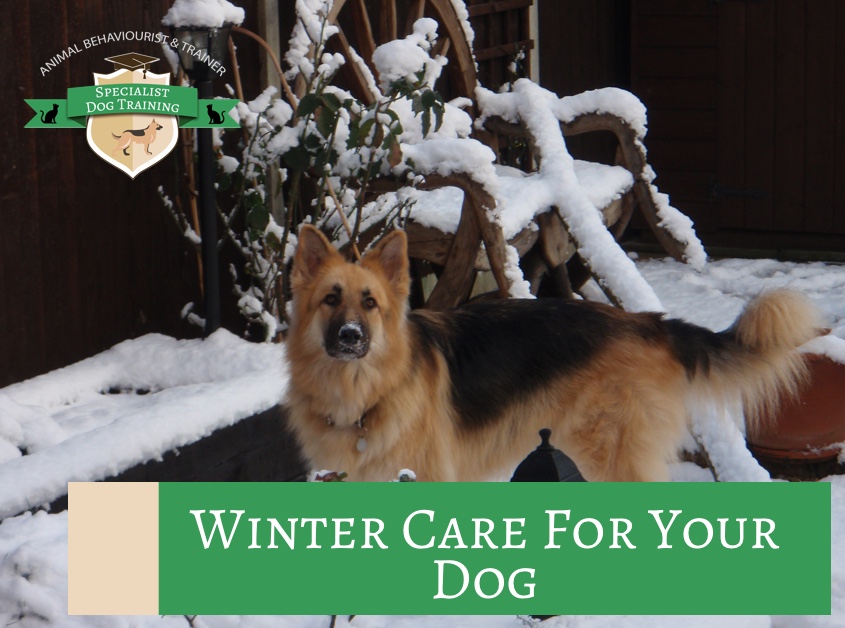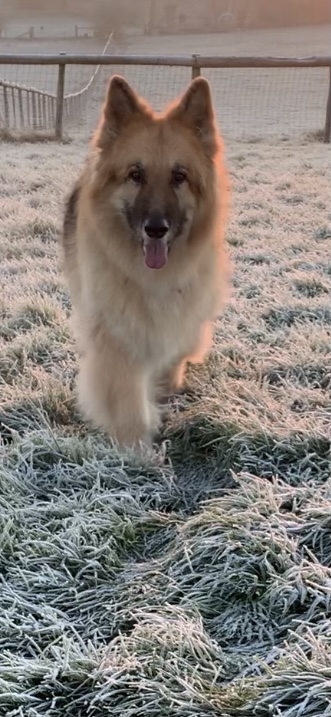
Here are our top 5 winter tips for looking after your dog:
Tip 1:
A dog fleece, coat or sweater may be useful. Some breeds may benefit from wearing a sweater indoors too, especially if your home is on the chilly side.
What to look for when choosing the right coat, fleece or sweater for your dog:
- Most coats are either made of wool or fleece, so make sure that this material is suitable for your dog and it does not cause your dog irritations to the skin when they are wearing it.
- The coat, fleece, sweater should be snug, but not tight. Make sure that your dog can move (walk, run) when wearing the coat, fleece or sweater.
- Get your dog used it slowly as some dogs may object to wearing one.
- For winter coats, choose bright colours to be seen.
Remember that a cosy bed away from draughts inside the home is just as important for keeping your dog warm.

Tip 2:
Be visible. As we have dark mornings and evenings, it is important to make sure that you and your dog are visible when out and about.
There are many high viz jackets for you and your dog, plus lights that attach to collars or leads or harnesses. Choose a couple to make sure that when you are walking you can be seen not only by- passing pedestrians, but also cyclists and motorists too.
Tip 3:
Make sure that your dog has good recall. When walking in these dark mornings or evenings, the visibility may also be hampered by fog or snow conditions. If you do let your dog off lead, make sure that you dog has a good recall to avoid them getting lost. Always make sure that they have their ID on their collar and their microchip details are up to date with your correct contact information.
Tip 4:
Protect your dog’s paws. Keep the fur on the feet of long-haired dogs well-trimmed. Ice can form between the pads and toes and this is extremely painful and uncomfortable for them. Towns and cities are coated with de-icing substances which can make pavements safe of pedestrians but can damage paw pads. After each walk make sure you wash your dog’s feet. Remember use warm water to reach between the toes and pads.
Tip 5:
Consider your dog’s age. With extremes in temperatures very young and very old dogs have a hard time regulating their body temperature, this can result in more extreme reactions to changes in the weather. Even our double coated breeds that live indoors will need to acclimatise to the outside colder temperatures. Short walks and activities outside will help them get used to the change in the weather.
